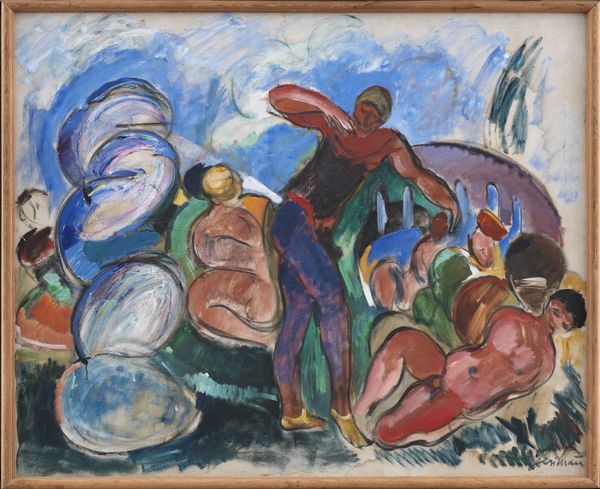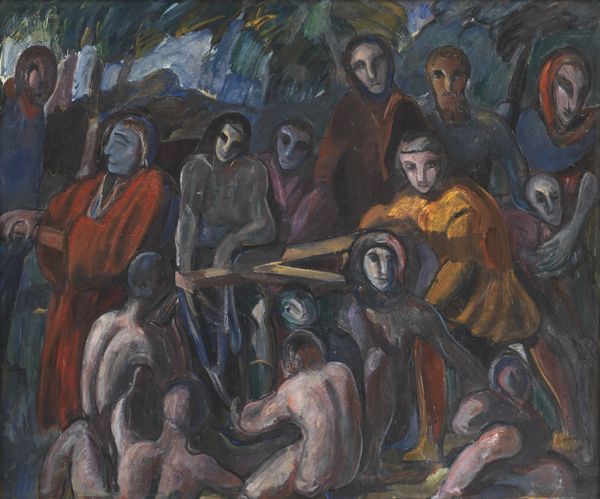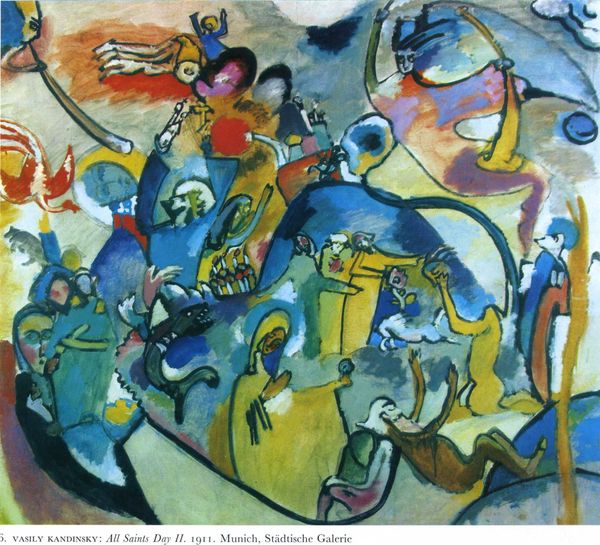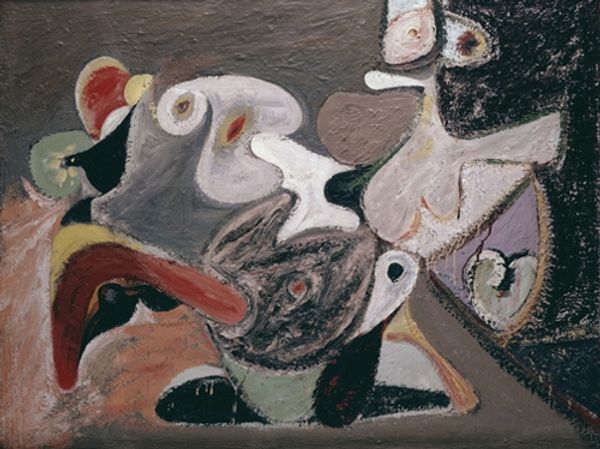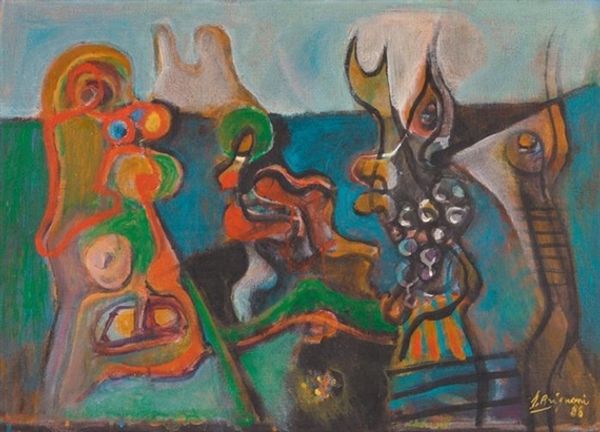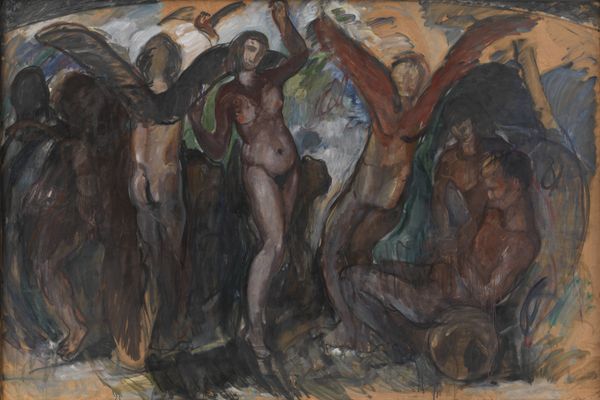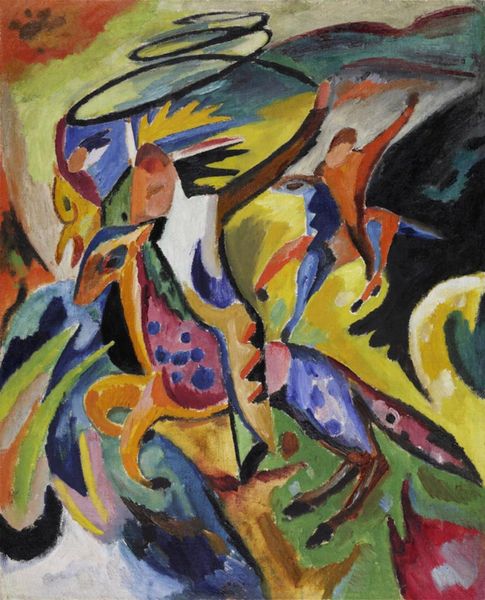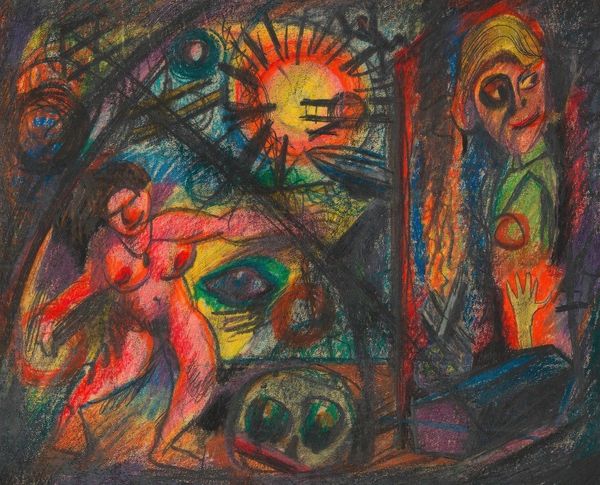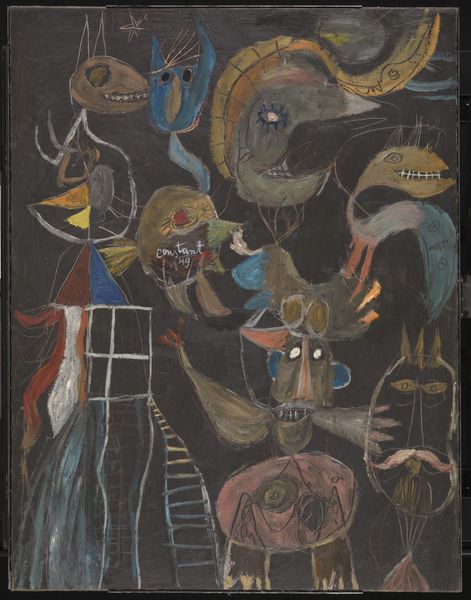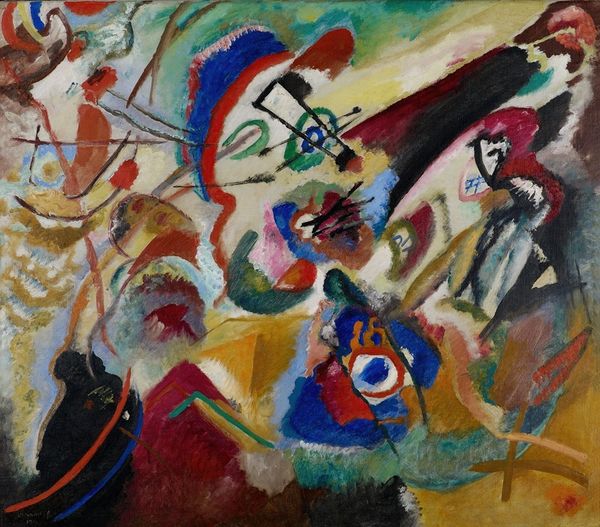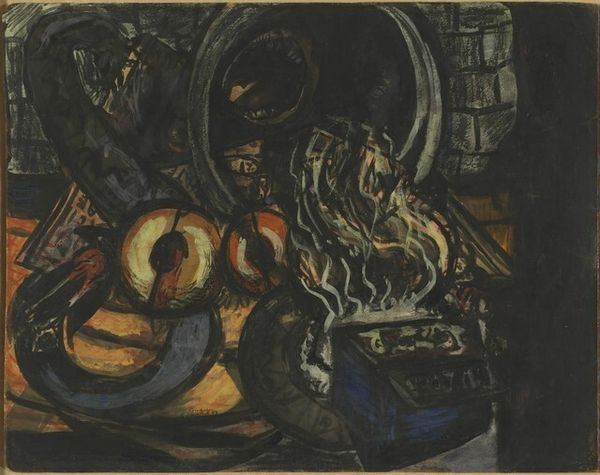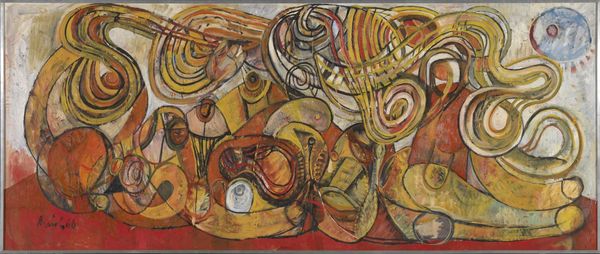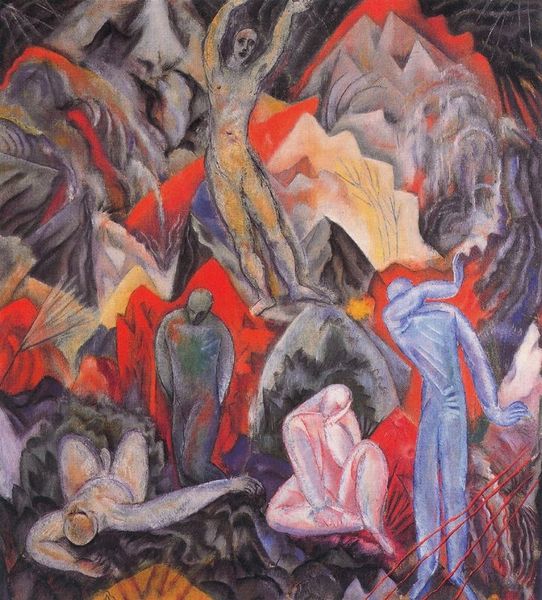
painting, oil-paint
#
narrative-art
#
painting
#
oil-paint
#
figuration
#
oil painting
#
expressionism
#
history-painting
#
nude
Dimensions: 159 cm (height) x 196.5 cm (width) (Netto), 186 cm (height) x 225.7 cm (width) x 12.5 cm (depth) (Brutto)
J.A. Jerichau (II) created this painting titled "The Creation of Eve" using oil on canvas. The visible brushstrokes give the artwork a dynamic texture, while the materiality of the oil paint allows for rich colors, from deep blues and greens to vibrant reds and yellows. The composition is divided into these zones of contrasting color, applied in an impasto technique to build up the image. Jerichau engages with traditional painting techniques while pushing the boundaries of representation. The canvas is densely packed with figures, and the rough application of paint creates a sense of immediacy. The amount of labor involved in creating such a large-scale work is considerable, and the visible brushstrokes serve as a reminder of the artist's hand. The process imbues the painting with an energetic quality, inviting viewers to consider the materiality and making of the artwork, challenging the conventional separation between craft and fine art.
Comments
statensmuseumforkunst almost 2 years ago
⋮
The dark colour scheme and the combination of symbolic figures and oval haloes of light enveloping the figures are reminiscent of Christian art from earlier eras. This is borne out by the title, which informs us that the image reinterprets the Old Testament tale about the creation of woman. However, in a move characteristic of Jerichau’s large-scale figure compositions the motif is also laden with a personally founded symbolism described in THE BOOK OF WISDOM, the artist’s own tome of occult writing from 1913-14. Formally, the painting evinces a modern, expressive use of colour, rhythm, and lines that only became truly unfettered during the last years of the artist’s life. The painting continues the “great tradition” within the arts while also presenting a highly personal vision that offers insight into the artist’s mind.
Join the conversation
Join millions of artists and users on Artera today and experience the ultimate creative platform.
statensmuseumforkunst almost 2 years ago
⋮
The picture occupies a central position among the large figure compositions that Jerichau painted in the last years of his life, 1913 to 1916. The creation of Woman The dark, sombre colour scheme, the complex combination of symbolic figures, and the oval haloes that surround the figures are reminiscent of religious art from previous centuries. This reading is supported by the title, which also specifies that the image is a reinterpretation of the Old Testament tale of the creation of Woman. In Jerichau’s version, this creation takes place under the watchful eye of God, who occupies a central position in the composition between the angel and the prophet. Inspiration for the painting In terms of both form and content, the picture represents a high-flown ambition to carry on the tradition from the old masters of European art such as Raphael, Michelangelo, and El Greco. As many other of Jerichau’s large canvases, this scene is also laden with personal significance. Thus, the figures correspond to concepts such as the ”Father”, ”Mother” and ”Family” as described in Visdommens Bog (The Book of Wisdom), the artist’s occult symbolic book written in 1913-14. In addition to this, the painting displays a modern, expressive use of colour, rhythm, and lines that only truly set in during Jerichau’s final years. The picture is at one and the same time a continuation of ”the grand tradition” of painting and a personal vision; one that communicates what lurks in the deepest reaches of the artist’s mind.
